3 Min Read
Is A Net Zero ICF Home Really Worth It In West Michigan?
You’ve probably heard that an ICF home is more efficient than others. Here’s a quick crash-course about ICF homes. Maybe you’ve even come across figures like 32% to 44% energy savings. But how accurate are those claims? And is a net-zero home really worth the investment?
In this blog, we'll explore three key metrics: HERS energy usage projections, actual energy usage, and actual energy bills.

HERS Ratings
Every project we build starts with a preliminary HERS score. This involves energy modeling that considers various aspects of the home, like insulation levels, HVAC equipment, appliances, and even the number of occupants.
For the homes we've built, we've found that the projected energy usage is very close to what our clients actually report. In fact, many of our energy-conscious clients use even less energy than projected.

Take a look at the summary report above. See the large "Annual Savings" figure in the center of the blue bar? That’s right, this 3,289 sq.ft. home is saving over $5,700 per year. Expected energy costs are $2,360. By my math, that’s over 70% energy savings before adding solar.
Sure, this is only a projection generated by software, but as we’ll see below, these savings are very real—you can take them to the bank (or use them for vacations for the next 30 years)!
What would you do with an extra $5,700 per year?
Energy Usage
Some of our projects include a method for recording actual energy used. This particular home uses a thermostat that tracks heating and cooling energy. But first, let's take a look at what the HERS model projected:

This is from a 2014 build. Today’s water heaters, appliances, and cold climate heat pumps are even more efficient.
Looking at the heating and cooling kilowatt-hour projections, the estimate was a total of 6,226 kWh.
Now, let’s see how the home actually performed in 2023:

That’s right—despite needing some backup heat on the really cold days, this home used only 3,951 kWh for the entire year. That’s a small fraction of the already impressive HERS-projected savings: 73% for heating and 65% for cooling.
But how many square feet are being conditioned? And how cold did the occupants keep it?
- Two fully finished levels, each about 1,700 sq.ft., totaling just over 3,450 sq.ft.
- Super comfortable: at least 72°F in winter and 76°F in summer.
- Humidity levels maintained near 50% year-round for comfort and health.
Another way to look at this: the total utility usage for heating and cooling is just 1.15 kWh per square foot.
The higher cost to build a net-zero ready home is more than offset by the energy savings. And those savings don’t stop once the mortgage is paid off—they keep money in your pocket month after month and year after year. The savings only grow as utilities raise their rates.
Where The Details Make The Difference
Let's go over some related, but distinct terms:
- Energy usage is the amount of energy required to heat and cool the home, e.g., 1.5 kWh.
- Energy costs are what you pay for that energy.
- Energy bills are what you actually pay to the utility.
Energy costs
Since some of our projects measure actual energy used, we can do some simple math to calculate the cost. This particular home used 3,951 kWh in 2023, but utility rates vary. I've seen rates as low as $0.07/kWh and as high as $0.22/kWh. That leaves you with energy costs between $277 and $869 per year—or between $23.08 and $72.50 per month for a Zero Energy Ready Home.
This Is Where It Gets Fun
But what are the actual bills in a true net-zero, aka Zero Energy home?
In Michigan, these homes generate excess electricity during the summer months, which is sold back to your utility as credits. During the winter, that energy is purchased back.
Unfortunately, you sell low and buy high, so while your net energy usage might be zero for the year, you can still expect to pay some out of pocket toward the end of winter when your credits are used up. In other words, zero energy doesn’t quite mean zero bills.
The output below shows the energy usage of the home above in orange and energy production in blue. On this late August day, almost half of the energy produced is sold back to the grid—all while keeping the home comfortably cool and dehumidified.

Every year will be different—varying sunlight and outdoor temperatures impact the equation. But every year will be amazing, with many of your bills looking like this (or better).

Net-zero homes aren’t just for climate-conscious folks in California anymore! When the savings are factored in, West Michigan residents can enjoy lower costs and higher comfort month after month, and year after year.
Enjoy Lower Energy Costs in Your Net Zero Home
At R-Value Homes, we love using Insulating Concrete Forms as the cornerstone of our net-zero home building. ICF construction greatly simplifies not just the insulation of your home, but also air sealing and water management. The combination of concrete and foam gives our clients incredible efficiency, excellent air quality, and comfort beyond belief. Contact us today to get started on your Net Zero Home.




